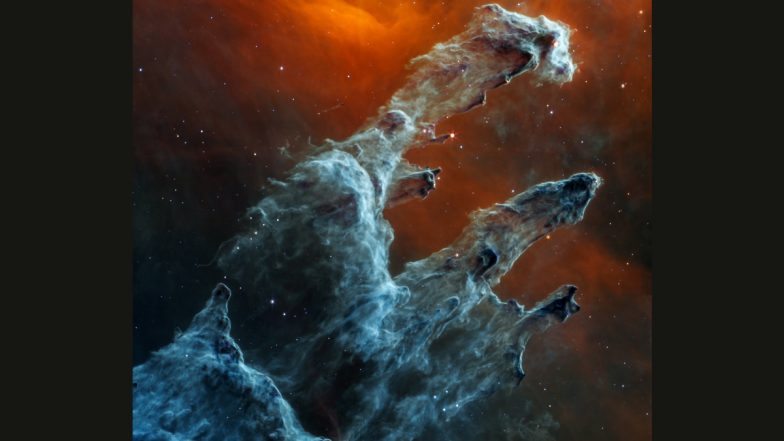Welcome back, space fans, first-time readers, and everyone in between. The first few days of the week have been a little quiet, space-wise, but there have been some interesting things, especially for fans of InSight and Mars exploration in general.
One of the seismic events detected by InSight was actually a meteor strike
Since landing on Mars, NASA’s InSight probe has detected the first seismic event on another planet, improved our understanding of Mars’ crust, mantle and core, measured the remnants of Mars’ magnetic field, and collected more data on Martian weather than any other probe sent to Mars so far. The mission is due to end at the end of December 2022, but an announcement made by NASA on Thursday once again proved the value of the InSight mission.
On December 24, 2021, InSight detected a magnitude 4 earthquake. After analyzing the seismic data and combining InSight measurements with data collected by the Mars Reconnaissance Orbiter (MRO), NASA determined that this particular earthquake was actually caused by a meteor impact. Although the impactor was modest (16 – 39 feet), it is still one of the largest cratering events that NASA has witnessed in real time. NASA released pre- and post-impact photos of the site:

“This Martian meteorite impact crater was discovered using the black-and-white context camera aboard NASA’s Mars Reconnaissance Orbiter. The Context Camera took these images before and after the impact, which occurred on December 24, 2021, in a region of Mars called Amazonis Planitia.” Credits: NASA/JPL-Caltech/MSSS
“It is unprecedented to find a fresh impact of this size,” said Ingrid Dowbar from Brown University, who leads the InSight Science Impact Task Force. “This is an exciting moment in geological history, and we must witness it.”
The December earthquake was the first observed earthquake with surface waves. As the name suggests, surface waves are seismic waves that travel mainly through the surface of the planet. Although we detected seismic waves on the Moon while the Apollo seismometer network was active, this is the first time we have detected seismic surface waves on a body other than Earth. And in this case, the speed of the surface waves was much higher than what InSight had previously observed from the rocks immediately below its own landing site.
The researchers hope to use this data and information gathered from several other relatively energetic quakes to better understand the deep structures of the Martian crust. The northern and southern hemispheres of Mars are dramatically different. This has led to speculation about the deep composition of the planet beneath each hemisphere. The information we gathered from InSight, once fully analyzed, could help us understand how different materials are distributed in the Martian crust.
Back-up InSight hardware headed to the Moon
The InSight mission may be over, but there are plans to use some of its spare hardware in a similar mission to the Moon in the near future. InSight’s seismometer is called SEIS (Internal Structure Seismic Experiment). When the French space agency CNES and the Institut de Physique du Globe de Paris (IPGP) built SEIS, they also built a backup model of the hardware left on Earth. After the success of InSight, this spare hardware was modified for a mission to the far side of Earth’s moon.

There is definitely a Nazi base on the dark side of the moon. I saw him in a movie, so must Be honest…
The SEIS Very Broad Band (VBB) seismometer will be one of the components of the Farside Seismic Suite and should be ready for lunar deployment by 2025 through NASA’s Commercial Lunar Payload Service program. It has been decades since NASA had functional seismometers on the Moon; the Apollo seismic network was shut down in the late 1970s, and we never had seismometers on the far side of the moon. If the Nazis really are secretly tunneling through the dark side of the moon in pursuit of our precious bodily fluids, projects like this will make sure we know about it.
“The originality of the Farside Seismic Suite is that it will be independent of the lander,” said Gabriel Pont, director of the Farside Seismic Suite at CNES. Ars Technica. “This is because it has to survive several lunar days and nights, which is not the case with the lander. The Farside Seismic Suite will have its own solar panels, antennas to communicate with the orbiters, and its own thermal control devices.
The big impact hypothesis is currently the leading explanation for how the moon formed by a wide margin, but there are still significant questions about the event. A better understanding of the moon’s composition, structure, and geological activity can help us answer the questions of where it came from in the first place.
The ISS is forced to maneuver (again) to avoid space debris
Earlier this week, the International Space Station was again forced to maneuver to avoid being hit by space debris created by Russia’s November 2021 anti-satellite weapons test.
The Russian military’s performance in Ukraine over the past year offers a partial explanation for why Russia chose to destroy Cosmos 1408 with a missile, but the laws of physics don’t much care for human concepts like nationalism. Orbital space junk is a danger to the long-term utility of space and to humanity’s overall ability to explore space. Kessler syndrome may not prevent us from using satellites in different orbits, but it absolutely does Nothing Better.

The distribution of debris around the earth as of 2019. Data from NASA simulation.
After Russia’s test last year, the United States pledged to ban such tests within our borders and called on other nations to make similar pledges. So far, Canada, Germany, Japan, New Zealand, South Korea and the United Kingdom have pledged not to conduct anti-satellite weapons tests of their own.
NASA announces its UFO Dream Team to investigate “Unidentified Aerial Phenomena”.
NASA has announced the 16 individuals who will participate in its independent study to understand and characterize sightings of what it calls an Unidentified Aerial Phenomenon, or UAP. The organization defines UAP as “Observations of events in the sky that cannot be identified as aircraft or as known natural phenomena.”
Official discussion of UAPs and UFOs has skyrocketed this year, as my colleague Adrianna Nine noted earlier this week when she wrote:
“The team is impressively diverse: two astrophysicists, two political specialists, two aviation specialists, an oceanographer, an AI startup founder, a science journalist, a planetary scientist, a former NASA astronaut, a telescope scientist, a space infrastructure consultant, an electrical and computer engineer, and one physicist each made the cuts.’
NASA published a a short biography to each member of the team and gives the impression of a serious-minded group.
The US government may not spend much time chasing reports of little green men, but there are reports of UAPs that remain unexplained to this day, some of which are supported by active radar returns that confirm there were something beyond just a visual phenomenon. There are obvious national security reasons why Uncle Sam would want to move these events into the “famously known” category.
Skywatchers Corner
This week we are on location in the Adirondack Mountains of New York. Between the mountain peaks and the dark night sky, the Adirondacks are one of the best places in the United States for sky gazing. Orion might be my favorite constellation, and it’s low in the sky as night falls. The brilliant Betelgeuse shines in crimson from the mighty Hunter’s shoulder. Thursday night was cold and fairly clear and we caught a few meteors – probably from the Orionids.
The Orionids meteor shower actually comes from the debris trail of Halley’s Comet. As Earth sweeps its spiraling trail through space, it crosses the comet’s path, and some of the debris is trapped in our atmosphere. But the meteor shower gets its name from the place in the sky where it appears to originate. The Orionids appear to radiate from a point near the constellation Orion.
Cool, clear weather is great for sky watching. And while the Orionids technically peaked last week, they will be strong throughout November. This shower often creates long, streaky fireballs. So while you’re out looking at the constellations andspine of the nightyou might just get lucky and see a shooting star.
Throughout the summer and fall, Mars, Jupiter and Saturn put on their own colorful show. They say the planets don’t shine like the stars because the planets are so much closer that the atmosphere doesn’t distort their light as badly. And this week, if you have clear skies, you might take some time after sunset to look for the jewel-like colors of these three planets. (They’re especially impressive from a height, because you can literally soar above the clouds.) It’s a great demonstration of the constant light of the planets.
But more than a demonstration of physics, it’s just awesome. Think about it: you are looking at an entire “other planet”. They are so far! But you can still see them. Here we are looking out, across space, into the outer solar system, and you can see whole other worlds with the naked eye. It’s just a wonderful thing. So go outside and look up!
Now read:
https://www.extremetech.com/extreme/340536-this-week-in-space-insight-iss-and-ufos








